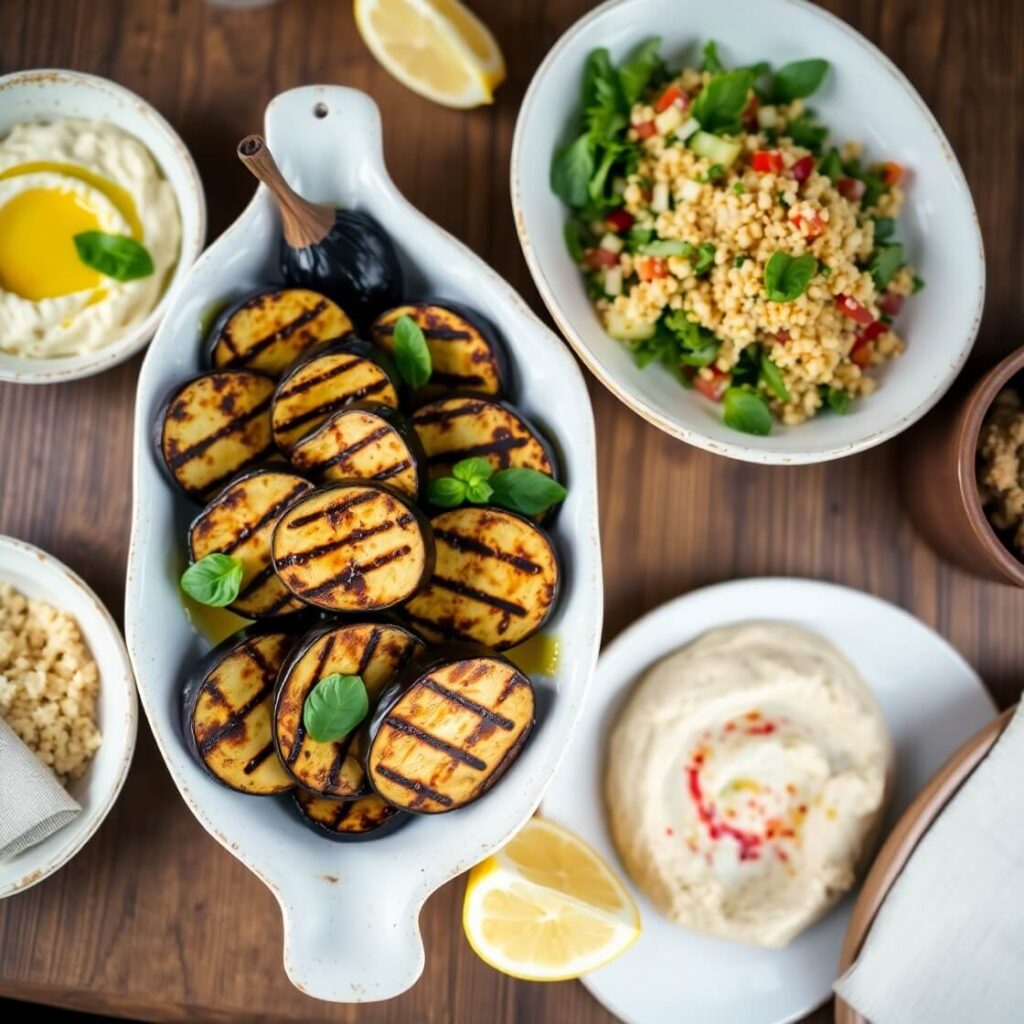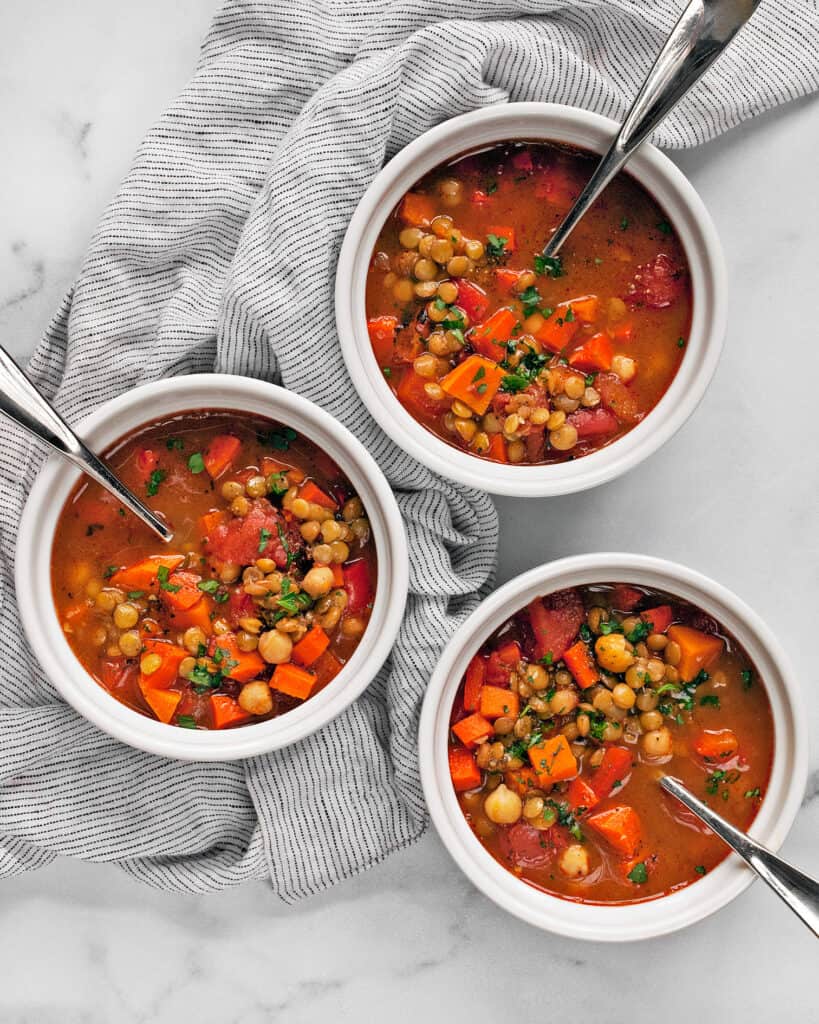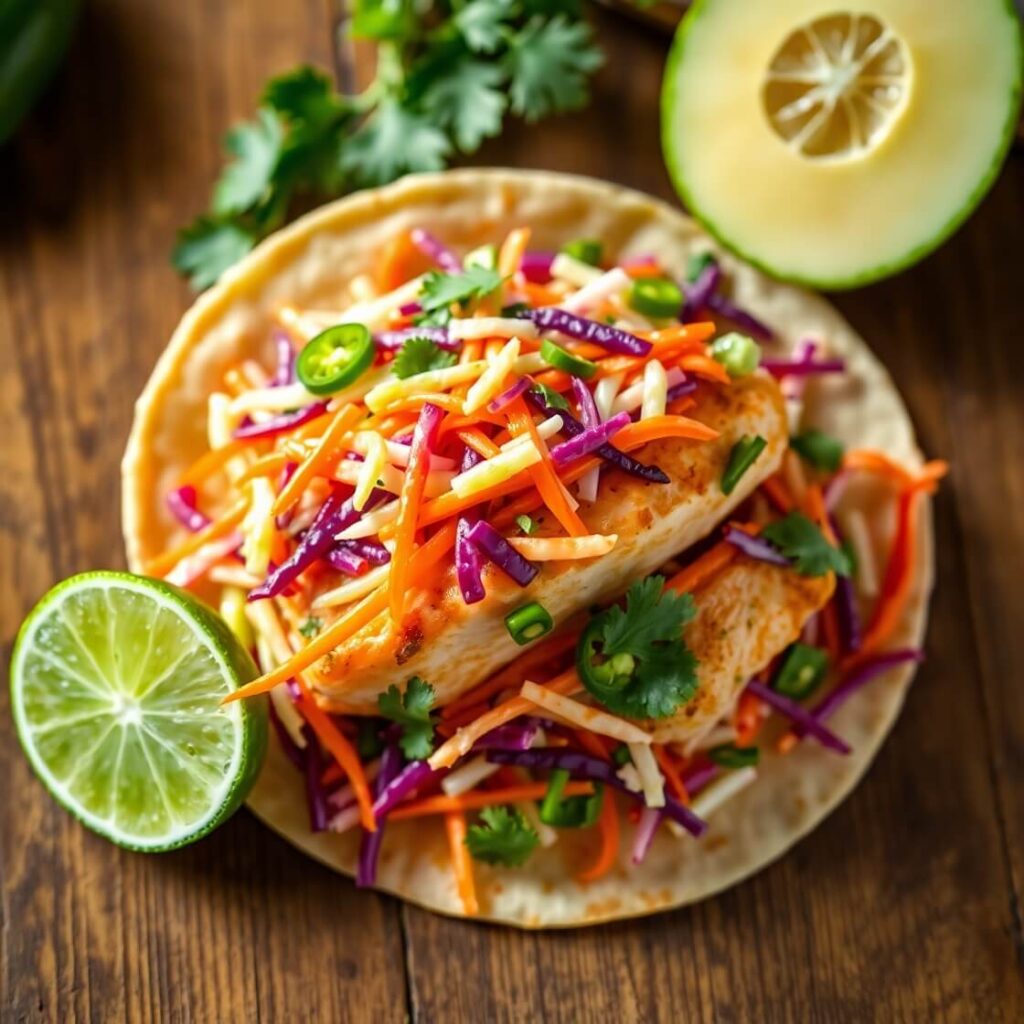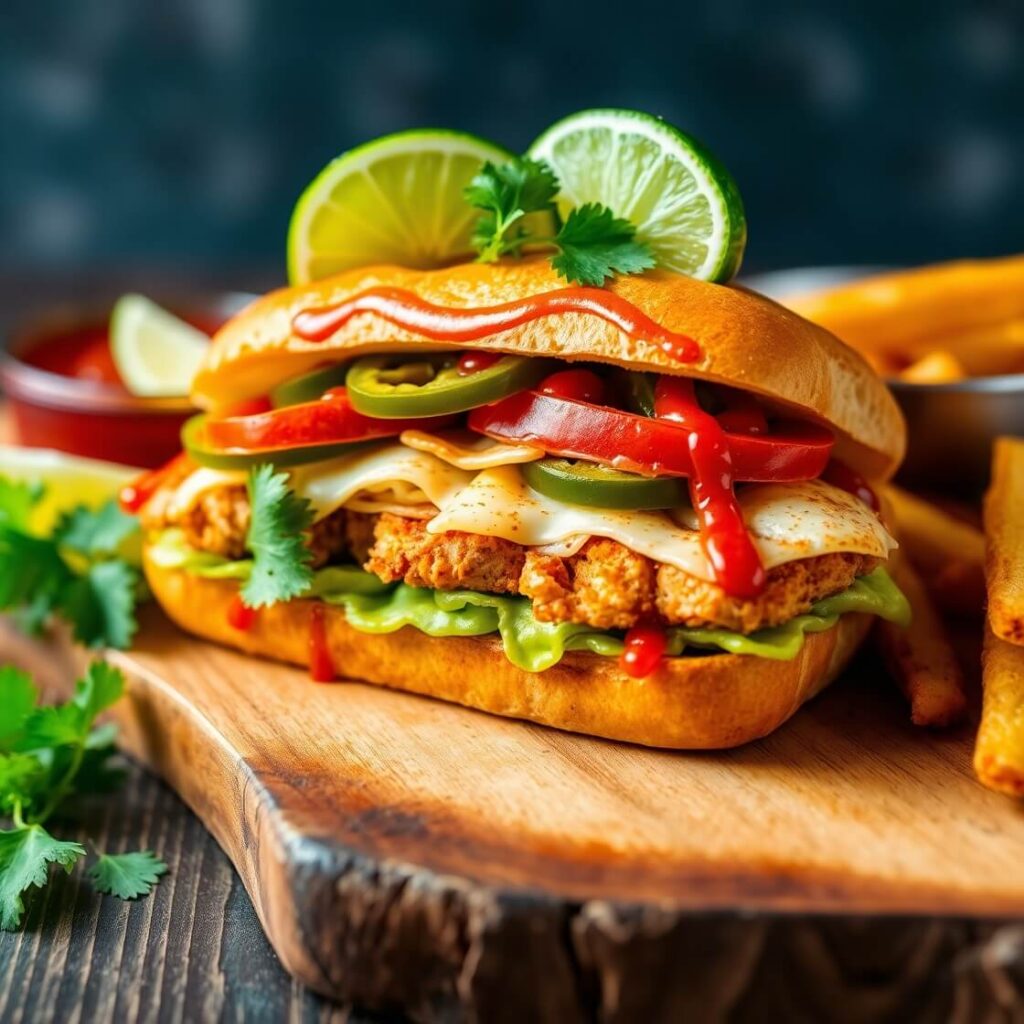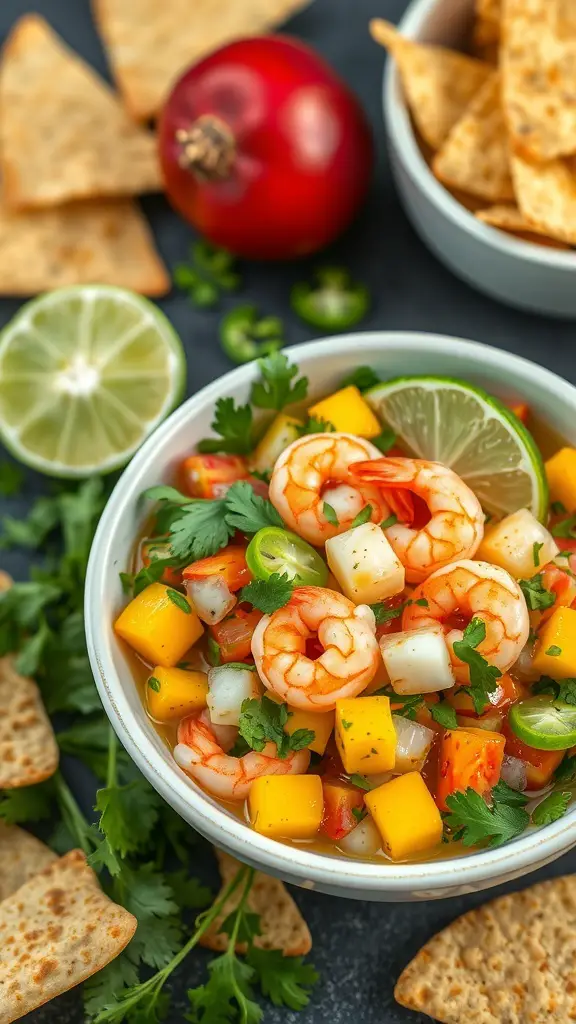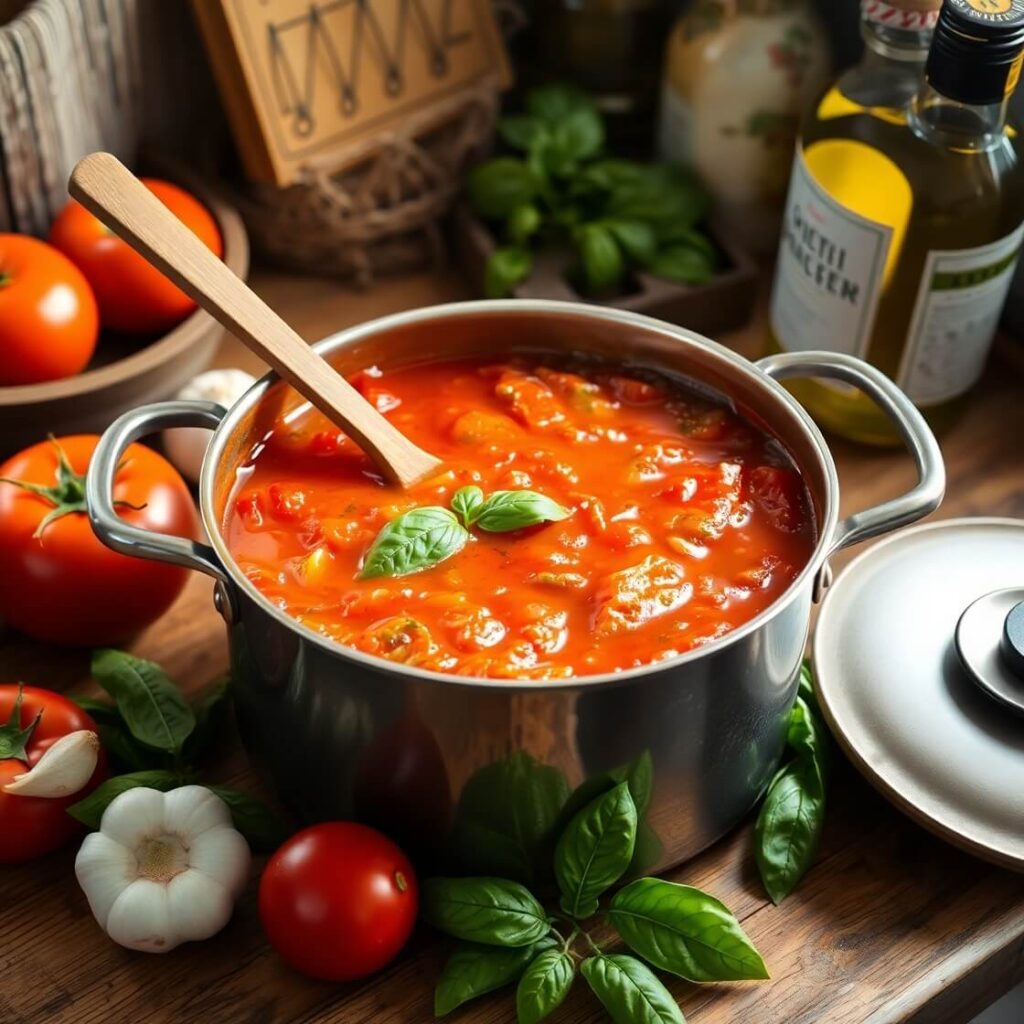Garlic & Herb Grilled Eggplant (Incredibly Tender & Delicious)
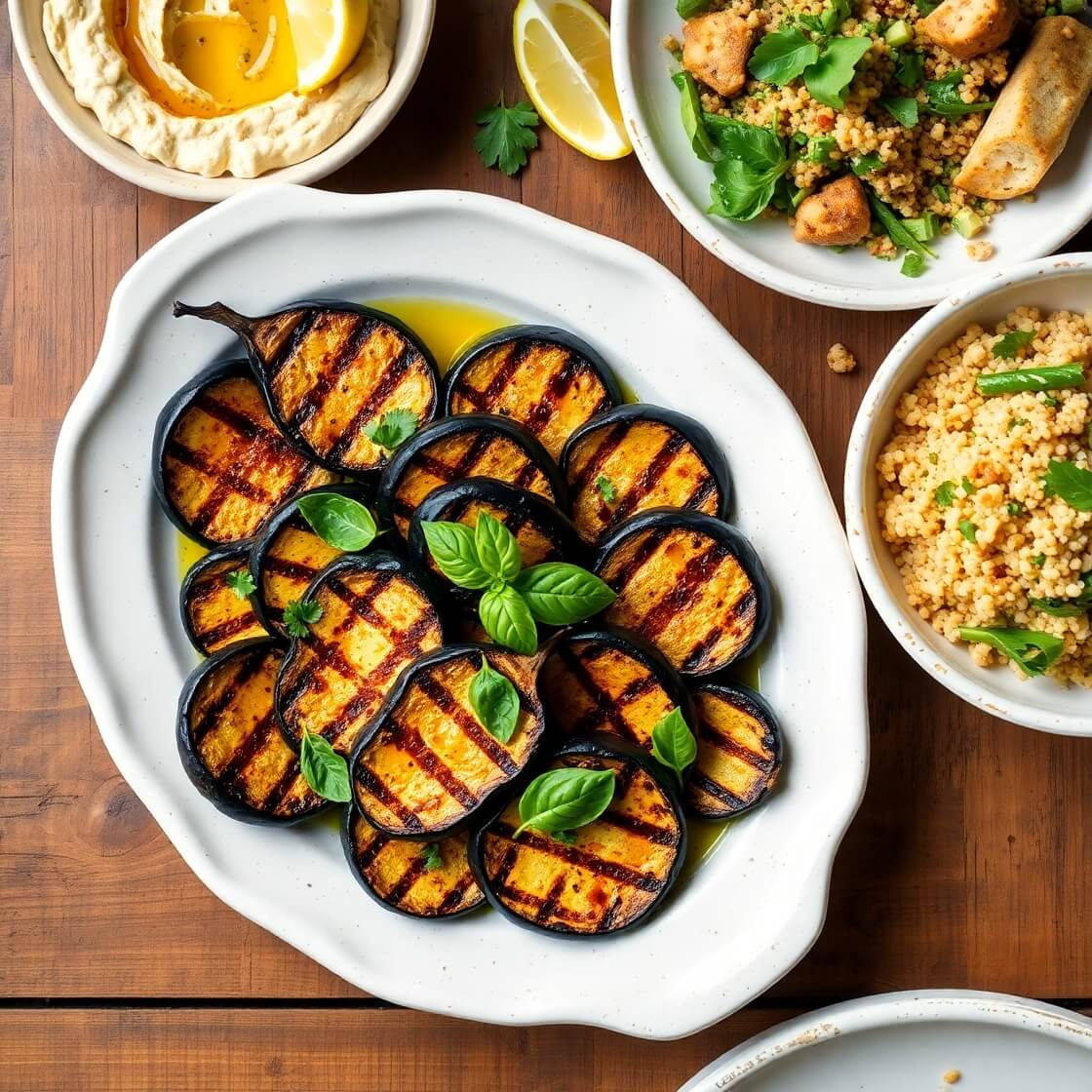
There’s something about the smell of grilled vegetables that instantly transports me back to lazy summer evenings. I remember the first time I tried grilling eggplant—it was during a backyard barbecue at my cousin’s place. I was convinced that eggplant would turn into a mushy mess, as it often did when baked or sautéed at home. But as soon as the slices hit the grill, a smoky aroma filled the air, and my skepticism began to fade.
I laughed at my earlier assumptions when my cousin handed me a perfectly charred slice, tender on the inside yet crisped just enough on the edges. That first bite was a revelation—the subtle sweetness of the eggplant complemented by the char gave it a depth I hadn’t anticipated. Since that day, grilled eggplant has become my go-to summer side dish, whether it’s a solo dinner, a family gathering, or even tucked into a warm sandwich.
Cooking eggplant can feel intimidating, but in reality, it’s all about understanding its personality—its thirst for oil, its delicate flesh, and its uncanny ability to soak up flavors. Once you get the hang of it, grilled eggplant transforms from a simple veggie into a centerpiece worthy of a weeknight or a festive spread.
Curious Questions About Grilled Eggplant
Over the years, friends and family have asked me countless questions about this humble yet versatile vegetable. Here are some of the most common curiosities I’ve encountered:
Why does my eggplant taste bitter sometimes?
Eggplants can have a slightly bitter note, especially the larger varieties. Salting the slices before grilling draws out excess moisture and reduces bitterness, giving a creamier, sweeter bite.
How thin or thick should I slice it?
For a tender interior with a smoky crust, I usually aim for slices about half an inch thick. Thinner slices cook quickly but can dry out, while thicker ones need more attention to ensure they’re cooked through.
Do I need to peel it?
Not at all. The skin adds texture, color, and nutrients. Only remove it if your eggplant is exceptionally large or tough, but for most varieties, the skin grills beautifully.
Can I grill it indoors if I don’t have a barbecue?
Absolutely! A grill pan or cast-iron skillet on your stovetop can produce similar results. Just make sure it’s hot enough to give those signature char marks.
Is it okay to marinate eggplant?
Yes, but lightly. Eggplant is like a sponge—it absorbs flavors fast. Too much oil or liquid can make it soggy, so a simple drizzle of olive oil, some herbs, and a touch of acidity usually works best.
Why You Will Love These Grilled Eggplant
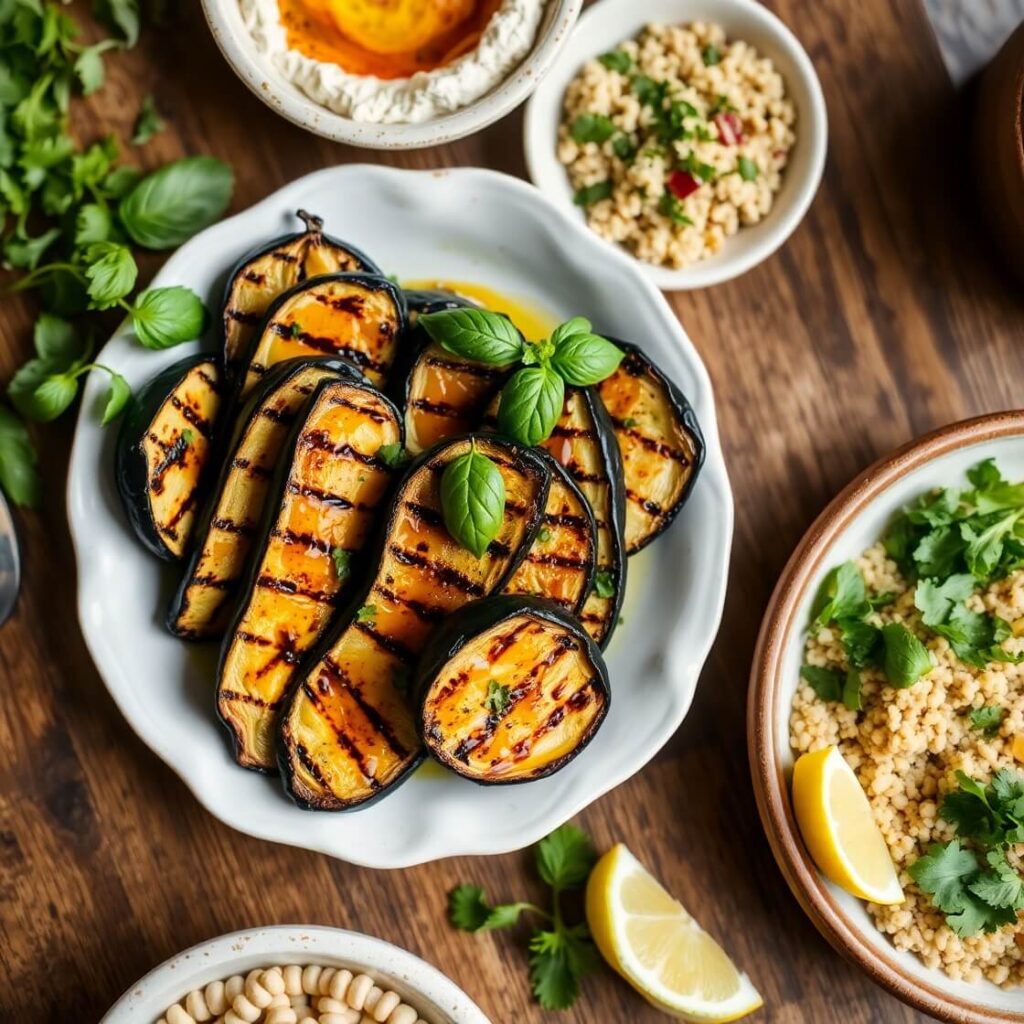
What makes grilled eggplant stand out isn’t just the grill marks or the slightly smoky aroma—it’s the balance between texture and flavor. The heat softens the flesh until it’s silky, while the exterior develops a caramelized, lightly charred layer that adds complexity.
The magic also lies in simplicity. Eggplant doesn’t need heavy sauces or complicated marinades to shine. A touch of olive oil, a sprinkle of salt, and a hint of garlic or lemon can elevate it beyond what you might expect from a simple vegetable side. Grilling, rather than roasting or frying, intensifies natural flavors while keeping it relatively light—perfect for warm evenings when you don’t want to spend hours in the kitchen.
Over time, I’ve found that the best grilled eggplant has a bit of contrast—soft interior, crisped edges, and a hint of smokiness. The flavor deepens if you let the slices rest for a few minutes after grilling, allowing the juices to redistribute and the taste to mature. This small patience trick is one I often share with guests who assume eggplant is “boring”—once they taste it, they usually rethink that idea.
What You’ll Need
I like to keep this recipe approachable, using ingredients that are either pantry staples or easy to source at a local market.
- Eggplant: Choose firm, medium-sized ones with shiny skin and no blemishes. The smaller the eggplant, the sweeter and less bitter it tends to be.
- Olive oil: A high-quality extra virgin olive oil is worth it here. Since the eggplant absorbs oil easily, flavor matters more than quantity.
- Salt: I prefer sea salt for its subtle crunch and flavor depth. Kosher salt works wonderfully too.
- Garlic: Fresh cloves are ideal, either minced or rubbed directly on the eggplant. Garlic powder can be a convenient backup.
- Lemon juice: A splash brightens the smoky flavor and adds a fresh, zesty note.
- Optional herbs: Fresh rosemary, thyme, or parsley complement grilled eggplant beautifully. I’ve also experimented with oregano for a Mediterranean touch.
You can mix and match depending on what you have on hand or the cuisine you’re leaning toward. For instance, adding a sprinkle of smoked paprika gives it a slightly spicy kick, while a drizzle of balsamic glaze adds a sweet-tart dimension. One of my favorite tricks is topping warm slices with crumbled feta or goat cheese right before serving—salty and creamy, it’s irresistible.
How to Make This Grilled Gggplant
Here’s how I bring out the best in grilled eggplant, step by step, with sensory cues to guide you:
- Slice the eggplant: Cut the eggplant into half-inch thick rounds. Notice how firm yet tender the flesh feels under your knife—avoid mushy or overly soft spots.
- Salt and rest: Lay the slices on a paper towel or a rack, sprinkle lightly with salt, and let them sit for 20–30 minutes. You’ll notice beads of moisture forming. This is the bitterness being drawn out. Pat dry gently before cooking.
- Preheat the grill: Whether you’re using an outdoor grill or a stovetop grill pan, get it hot—medium-high heat works best. You should see slight wisps of smoke once ready.
- Oil and season: Brush each slice lightly with olive oil on both sides. Sprinkle with your chosen seasonings. A touch of pepper and minced garlic here goes a long way.
- Grill with attention: Place slices on the grill and let them sear for 3–5 minutes per side. Don’t constantly flip them. Look for those signature char marks and smell the aroma—it should be earthy, slightly sweet, and smoky.
- Check tenderness: Slide a fork into the thickest part. It should meet little resistance, but the slice should still hold together. Overcooking leads to mushy, falling-apart slices.
- Finish with a squeeze of lemon: Once off the heat, drizzle lemon juice over the warm slices. The brightness will balance the richness of the olive oil and char.
- Optional garnishes: Fresh herbs, a sprinkle of cheese, or even toasted nuts add texture and flavor for a stunning presentation.
Serving Ideas That Shine
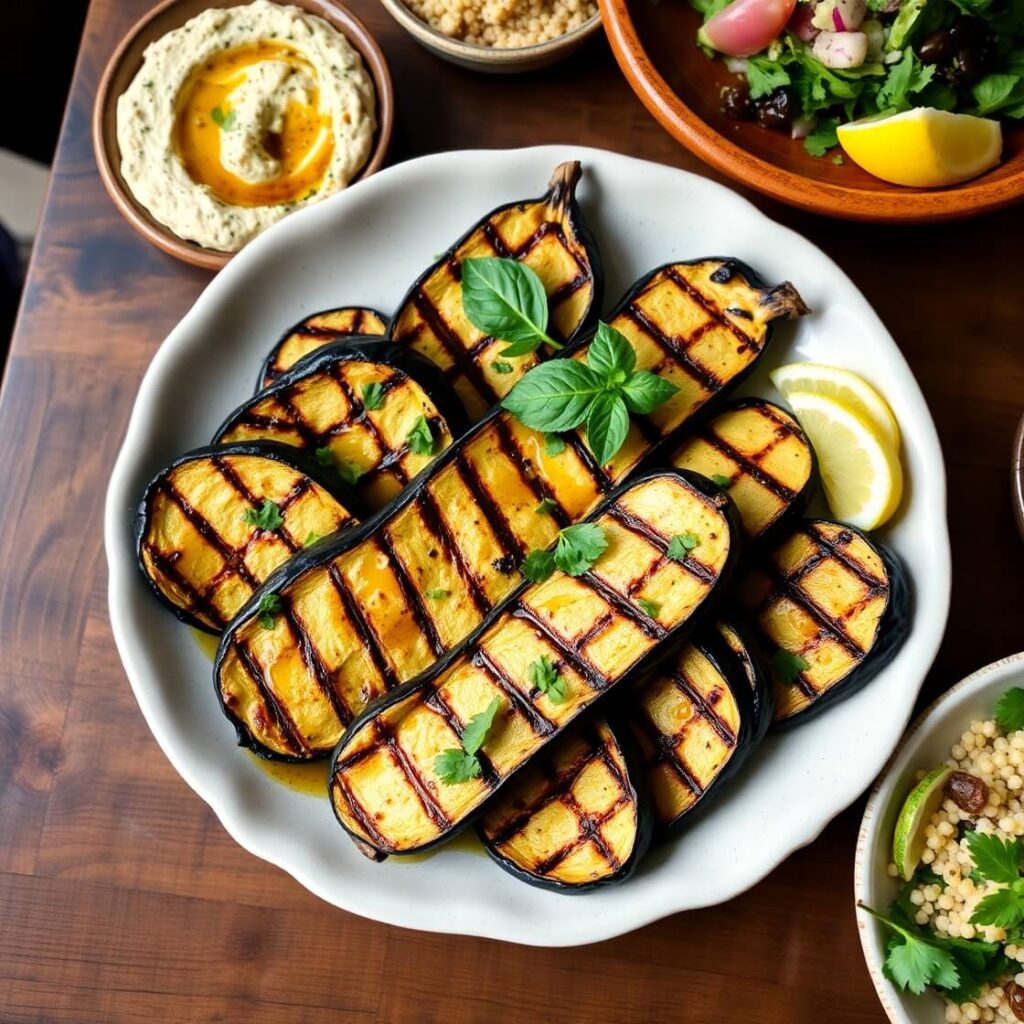
Grilled eggplant is incredibly versatile when it comes to serving. One of my favorite ways is simply as a warm side, drizzled with a bit of olive oil and sprinkled with fresh herbs. The simplicity allows the smoky flavor to truly shine.
For a more substantial option, try layering grilled eggplant slices in a vegetarian lasagna. The tender, smoky rounds replace pasta or meat beautifully, adding depth without heaviness. I remember the first time I made this for a dinner party—guests kept asking what made the lasagna taste “so rich and earthy,” and I just smiled, knowing it was the humble eggplant doing all the work.
Another favorite is using grilled eggplant in sandwiches or wraps. A slice of grilled eggplant with roasted red peppers, fresh mozzarella, and a smear of pesto transforms a simple lunch into something special. Even cold, the leftover slices are fantastic tossed into a salad with chickpeas, cucumbers, and a lemon-tahini dressing.
For Mediterranean-inspired meals, serve grilled eggplant alongside roasted lamb or chicken, paired with a couscous salad. The natural smokiness of the eggplant complements grilled meats beautifully, and the textures create a satisfying contrast.
Pro Notes & Mistakes to Avoid
Even seasoned cooks have missteps with eggplant, and I’ve had my fair share. Here are a few lessons I’ve learned along the way:
Over-salting: While salting helps reduce bitterness, too much can dry the slices. I usually sprinkle lightly and taste a small piece after resting.
Flipping too often: Eggplant needs time on each side to caramelize. Constant flipping prevents those gorgeous grill marks from forming.
Skipping the resting step: This is a common mistake. Not allowing salted eggplant to rest can result in a slightly bitter bite. Pat dry before grilling to prevent sogginess.
Too thick or too thin slices: Half-inch rounds are ideal. Too thin, and the slices may collapse on the grill; too thick, and they may stay undercooked inside.
Too much oil: Eggplant is a sponge and will soak up oil quickly. Lightly brushing each side is better than drenching.
Overcooking: Keep an eye on texture. Perfectly grilled eggplant should be tender, not mushy, with a slightly crisp edge. I learned this the hard way when a batch ended up almost puree-like—still edible, but far from visually appealing.
Leftovers and Storage
Grilled eggplant is forgiving when it comes to storage, which is great for meal prepping or using leftovers creatively.
- Refrigeration: Let slices cool completely, then store in an airtight container in the fridge for up to 3 days. A light drizzle of olive oil before sealing helps retain moisture.
- Freezing: If you want to freeze, flash-freeze slices on a baking sheet first, then transfer to a freezer-safe bag. Thaw in the fridge and reheat in a skillet or oven. Note: texture may be slightly softer after freezing.
- Make-ahead for parties: You can grill the eggplant a few hours ahead and keep it at room temperature covered with foil. Just add fresh herbs or lemon right before serving for brightness.
- Reheating: For the best texture, reheat slices on a grill or skillet rather than microwaving. The direct heat helps revive the slightly crisp exterior.
Frequently Asked Questions
Can I use a different type of eggplant?
Yes! Japanese or Italian eggplants work best for grilling. Larger globe varieties are fine too, but may need slightly longer cooking times.
Do I need to peel the eggplant?
Not unless it’s very large or the skin seems tough. Grilled skin adds texture and visual appeal.
Is grilled eggplant healthy?
Absolutely. It’s low in calories, packed with fiber, and rich in antioxidants. Using moderate oil keeps it light while enhancing flavor.
How do I make it spicy?
Add a pinch of cayenne or chili powder to the seasoning before grilling. A drizzle of hot honey after cooking is also a delicious option.
Can I grill eggplant on an indoor electric grill?
Yes, just ensure it’s preheated and you watch for smoke. A cast-iron skillet or grill pan works well if an outdoor grill isn’t available.

Grilled Eggplant
- Total Time: 30 minutes
- Yield: 4 1x
- Diet: Vegan
Description
Smoky, tender, and packed with flavor, this grilled eggplant recipe is a go-to summer favorite. Perfect as a side dish or main, it’s rich without being heavy, and it pairs beautifully with a variety of cuisines. Whether you’re serving it as part of a Mediterranean spread or as a hearty vegetarian main, this recipe delivers that perfect balance of caramelized char and creamy texture. Easy to prep and even easier to love, grilled eggplant is a dish you’ll come back to all season long.
Ingredients
- 2 large globe eggplants
- 3 tablespoons olive oil
- 1 teaspoon kosher salt (plus more if needed)
- ½ teaspoon black pepper
- ½ teaspoon garlic powder (optional)
- 1 tablespoon balsamic vinegar or lemon juice (optional)
- Fresh chopped herbs (basil, parsley) for garnish
Instructions
- Slice eggplants into ½-inch thick rounds.
- Salt both sides and let rest for 30 minutes. Rinse and pat dry.
- Preheat grill to medium-high heat and oil the grates.
- Brush slices with olive oil and season with pepper and garlic powder.
- Grill for 5–8 minutes per side until tender and grill marks appear.
- Remove, drizzle with vinegar or lemon juice, and top with fresh herbs.
- Serve warm or at room temperature.
Notes
- For extra flavor, marinate slices in olive oil, lemon, and herbs for 15 minutes before grilling. You can also top with tahini, feta, or a smoky yogurt sauce.
- Prep Time: 15 minutes
- Cook Time: 15 minutes
- Category: Side Dish
- Method: Grilling
- Cuisine: Mediterranean
Nutrition
- Serving Size: 4
- Calories: 115
- Sugar: 3g
- Sodium: 220mg
- Fat: 9g
- Saturated Fat: 1.2g
- Unsaturated Fat: 7.8g
- Trans Fat: 0g
- Carbohydrates: 8g
- Fiber: 4g
- Protein: 2g
- Cholesterol: 0mg

